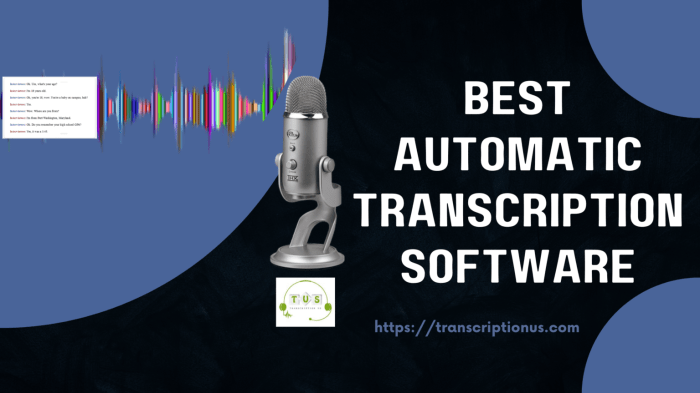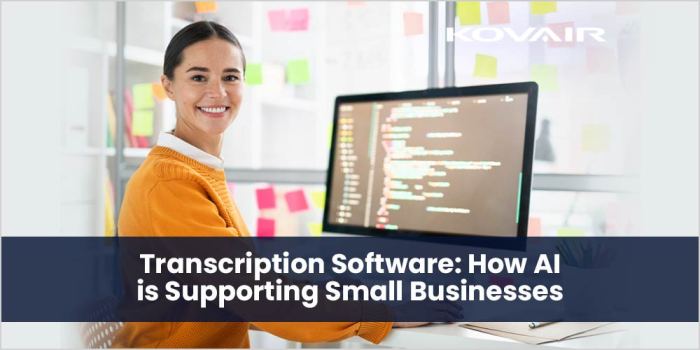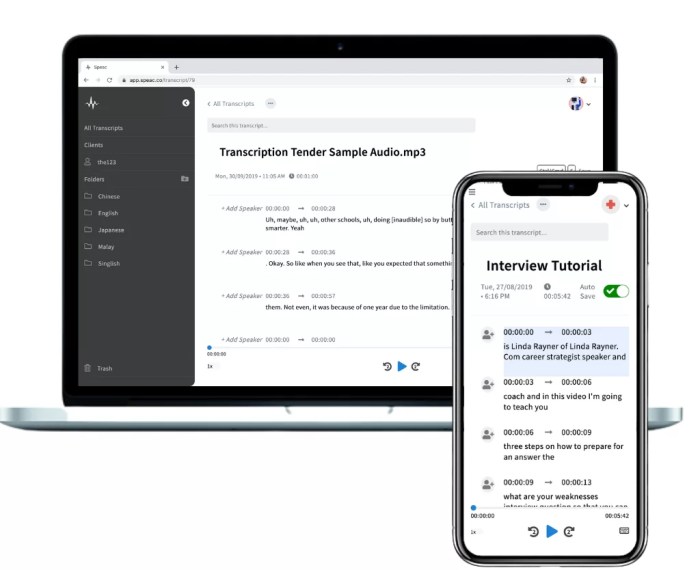Software can be used for transcription and authentication – With software for transcription and authentication at the forefront, this article delves into the world of digital tools that are revolutionizing the way we capture, verify, and protect information. These software programs offer a range of features and benefits that empower users to transcribe audio or video recordings with precision and authenticate identities securely, opening up new possibilities for various industries and applications.
Transcription software has become an indispensable tool for professionals who need to convert spoken words into written text. From journalists and researchers to legal professionals and students, these programs provide an efficient and accurate way to transcribe interviews, lectures, and other audio or video content.
Authentication software, on the other hand, plays a critical role in ensuring the security of online transactions and protecting sensitive data by verifying the identities of users through various methods such as passwords, biometrics, and multi-factor authentication.
Software for Transcription

Transcription software automates the process of converting audio or video recordings into written text. Examples include:
- Express Scribe: Free and open-source transcription software with basic features.
- oTranscribe: Web-based transcription tool with collaborative features.
- Dragon Professional: Professional-grade transcription software with advanced speech recognition capabilities.
Features and Benefits:
- Speeds up transcription by eliminating manual typing.
- Improves accuracy and reduces errors compared to manual transcription.
- Allows for easy editing and formatting of transcripts.
Effective Use:
- Choose the right software based on your needs and budget.
- Use a good quality microphone or recording device for optimal results.
- Proofread and edit transcripts carefully to ensure accuracy.
Software for Authentication

Authentication software verifies the identity of users accessing systems or applications. Types include:
- Multi-factor Authentication (MFA): Requires multiple forms of authentication, such as a password and a one-time code.
- Biometric Authentication: Uses unique physical characteristics, such as fingerprints or facial recognition.
- Single Sign-On (SSO): Allows users to access multiple applications with a single login.
Mechanisms and Protocols:
- Kerberos: Network authentication protocol that uses encryption to secure communication.
- OAuth: Open standard for authorization, allowing users to grant access to third-party applications without sharing their password.
- SAML: XML-based standard for exchanging authentication and authorization data between different systems.
Importance of Strong Authentication:
- Protects against unauthorized access to sensitive information.
- Reduces the risk of data breaches and cyberattacks.
- Complies with industry regulations and best practices.
Integration of Transcription and Authentication Software

Integrating transcription and authentication software offers several benefits:
- Improved Security: Verifying the identity of users before allowing access to sensitive transcripts.
- Enhanced Productivity: Automating the transcription process while ensuring the authenticity of users.
- Streamlined Workflow: Centralizing transcription and authentication tasks within a single platform.
Use Cases:
- Legal proceedings: Verifying the identity of speakers in audio or video recordings.
- Customer service: Transcribing and authenticating customer interactions for analysis and improvement.
- Medical transcription: Ensuring the accuracy and authenticity of medical records.
Implementation and Management:
- Choose compatible software that meets your specific requirements.
- Integrate the software using secure protocols and APIs.
- Establish clear policies and procedures for user authentication and access.
Security Considerations: Software Can Be Used For Transcription And Authentication
Using transcription and authentication software involves potential security risks:
- Data Breaches: Unauthorized access to transcripts containing sensitive information.
- Phishing Attacks: Tricking users into providing authentication credentials.
- Malware Infections: Software vulnerabilities that can compromise security.
Best Practices:
- Use strong passwords and MFA for authentication.
- Implement regular security updates and patches.
- Limit access to transcripts based on need-to-know principles.
Importance of Security Audits and Updates:
- Regular security audits identify vulnerabilities and weaknesses.
- Software updates address security patches and improve protection.
- Proactive security measures prevent potential threats and breaches.
Future Trends in Transcription and Authentication Software

Emerging trends shape the future of transcription and authentication software:
- Artificial Intelligence (AI): AI-powered transcription improves accuracy and efficiency.
- Machine Learning (ML): ML algorithms enhance authentication by detecting anomalies and patterns.
- Blockchain Technology: Blockchain-based authentication provides secure and tamper-proof records.
Impact on Transcription and Authentication:
- Increased automation and productivity.
- Enhanced security and fraud prevention.
- New use cases and applications.
User Queries
What are the benefits of using transcription software?
Transcription software offers several benefits, including increased accuracy and efficiency in converting spoken words into written text, reduced transcription time and costs, improved accessibility for individuals with hearing impairments, and enhanced search and retrieval capabilities for transcribed content.
What are the different types of authentication software available?
There are various types of authentication software available, including password-based authentication, biometric authentication (e.g., fingerprint or facial recognition), multi-factor authentication (MFA), and token-based authentication. Each type offers different levels of security and convenience, and the choice of authentication method depends on the specific requirements and risk tolerance of the organization.
How can I integrate transcription and authentication software?
Integrating transcription and authentication software involves establishing a connection between the two systems, allowing them to exchange data and automate workflows. This integration can be achieved through the use of APIs, middleware, or custom development, and it enables seamless transcription and authentication processes, enhancing efficiency and security.